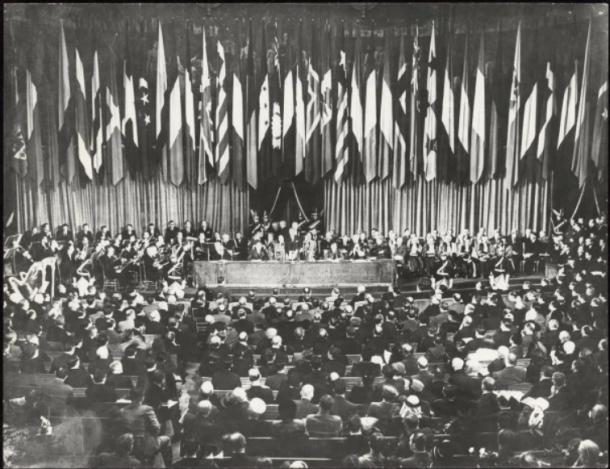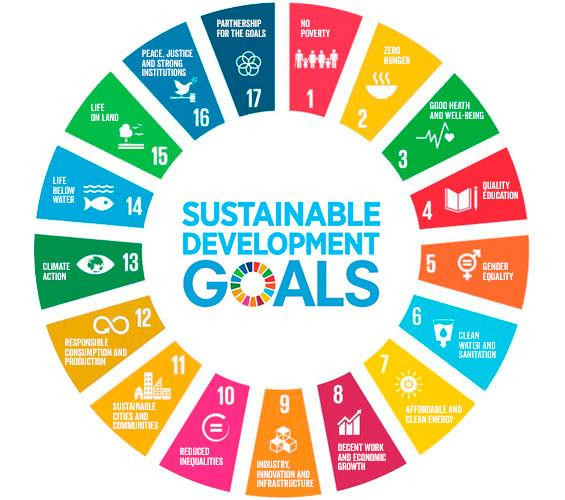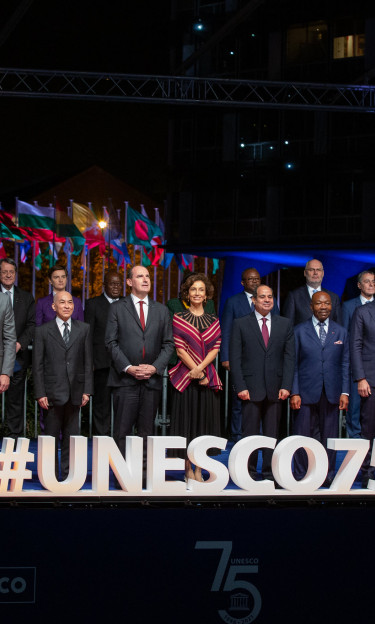
UNESCO in key figures
Genesis Of UNESCO
As early as 1942, in wartime, the governments of the European countries, which were confronting Nazi Germany and its allies, met in the United Kingdom for the Conference of Allied Ministers of Education (CAME).
World War II was far from over, yet those countries were looking for ways and means to rebuild their education systems once peace was restored.
The project quickly gained momentum and soon acquired a universal character. New governments, including that of the United States, decided to join in. Upon the proposal of CAME, a United Nations Conference for the establishment of an educational and cultural organization (ECO/CONF) was convened in London from 1 to 16 November 1945.
This conference gathered representatives of 44 countries who decided to create an organization that would embody a genuine culture of peace and with the common goal of preventing another world war.
On November 4, 1946 the Constitution of UNESCO came into force

Sustainable Development Goals
The Organization contributes towards achieving the UN’s through its work across:
- 2 Global Priorities
Africa:
As such, UNESCO and development partners are attentive to 54 African countries with a stronger and better targeted strategy. The African Renaissance is underway, with the adoption of the African Union's Agenda 2063 and the 2030 Agenda for Sustainable Development paving the ground for the African Economic Community.
Gender Equality:
UNESCO believes that all forms of gender-based discrimination are violations of human rights, as well as a significant obstacle to the achievement of the 2030 Agenda for Sustainable Development and its 17 Sustainable Development Goals.
- 6 Domains of Expertise

6 Domains Of Expertise
Organization



UNESCO Governance
The General Conference consists of the representatives of UNESCO's Member States. It meets every two years, and is attended by Member States and Associate Members, together with observers for non-Member States, intergovernmental organizations and non-governmental organizations (NGOs). Each country has one vote, irrespective of its size or the extent of its contribution to the budget. Its duty is to set the programmes and the budget of UNESCO. It also elects the Members of the Executive Board and appoints, every four years, the Director-General.
The Executive Board ensures the overall management of UNESCO. It prepares the work of the General Conference and sees that its decisions are properly carried out. The functions and responsibilities of the Executive Board are derived primarily from the Constitution and from rules or directives laid down by the General Conference. Every two years the General Conference assigns specific tasks to the Board.
The Secretariat is the Executive Branch of the organisation. It consists of the Director-General and the Staff appointed by him or her. The staff is divided into Professional and General Service categories. About 700 staff members work in UNESCO's 53 field offices around the world.
Over 75 years of work : Our achievements in a few dates

The Universal Copyright Convention was adopted in 1952, and revised in 1971, under the aegis of UNESCO with a view to extend international copyright protection universally

Establishment of a European Council for Nuclear Research. And today, it's one of the world's largest and most respected centres for scientific research

UNESCO launched an international safeguarding campaign to save monuments in Nubia from being flooded by the rising waters of the Nile

UNESCO invited renowned African scholars to come together and write their continent’s history from their own perspective. A total of nine volumes have been produced and three more are in preparation

The Intergovernmental Oceanographic Commission plays a critical role in saving lives within communities at risk from tsunami on the coastlines of oceans

The MAB Programme set an interdisciplinary and scientific basis for the improvement of human livelihoods and the safeguard of ecosystems

The declaration was unanimously passed by the 77 Member States’ delegations in attendance

Purposes of this Convention : safeguard the intangible cultural heritage; to ensure respect of the communities and provide international cooperation and assistance

The COVID-19 pandemic threatened the right to education of more than 1.5 B students. UNESCO launched the coalition of over 175 institutional, private sector and media partners
Keep in Touch
If you want to keep up to date with the latest news and information, follow us on social networks and subscribe to our Newsletter


